Tenderness in the posterior and/or anterior belly of the digastric can be recorded by digital palpation. In this instance, discomfort can be elicited by palpating behind the ascending ramus of the mandible or in the submandibular area below the body of the mandible. Tenderness in this muscle arises in patients who demonstrate bruxism on their anterior teeth with the mandible in protrusion.
The other suprahyoid, infrahyoid, and cervical muscles are difficult to examine apart from sternocleidomastoid, which can be examined by asking the patient to place the chin towards the shoulder and palpating the origin and insertion of the muscle on the opposite side.
Sternocleidomastoid muscle
The sternocleidomastoid muscle has two heads, one originating in the sternum and one in the clavicle; insertion of this muscle is into the mastoid process. When the sternocleidomastoid muscles act together they flex the neck. When one acts on its own it flexes the neck laterally and rotates the head.
These are important muscles to consider if your patient has, for instance, had a whiplash cervical extension/flexion injury and complains of generalised facial and cervical spine pain ( Figure 2.17).

Figure 2.17The sternocleidomastoid muscle.
(Courtesy of Dr Paul Rea and Caroline Morris, University of Glasgow.)
Classification and Pathology
When considering temporomandibular disorders by frequency of presentation, pathological changes within the joint complex are relatively uncommon. Let us consider the disorders divided by frequency of presentation into rare, uncommon and common conditions. We confine this script to the clinical relevance of pathological changes. Definitive text on pathology can be found elsewhere.
Rare conditions that affect the TMJ are very rare indeed. There are two conditions that you might encounter: condylar hyperplasia and neoplasms (benign and malignant).
The undifferentiated germinative mesenchyme cell layer persists in the mandibular condyle throughout life. This is one of the primary growth centres of the jaw in adolescence. There are three presentations of condylar hyperplasia. The first is when, during the pubertal growth spurt, one growth centre is more active than the other, and this results in a facial and occlusal irregularity where the asymmetry is vertical; the second is towards the end of puberty when one growth centre ‘switches off’ when the other does not. The clinical presentation of this is a combined vertical and horizontal facial asymmetry. The third is when the growth centre on one side becomes active, but the other side is inactive; this produces a horizontal discrepancy and facial asymmetry.
Tumours are rare, but ostoesarcoma and chondrosarcoma do present. Metastatic carcinoma is the most frequently occurring malignancy; however, the jaws are an uncommon site for metastasis, especially the mandibular condyle. When considering benign tumours, osteochondroma is the most common, but this is still very rare ( Figure 2.18).
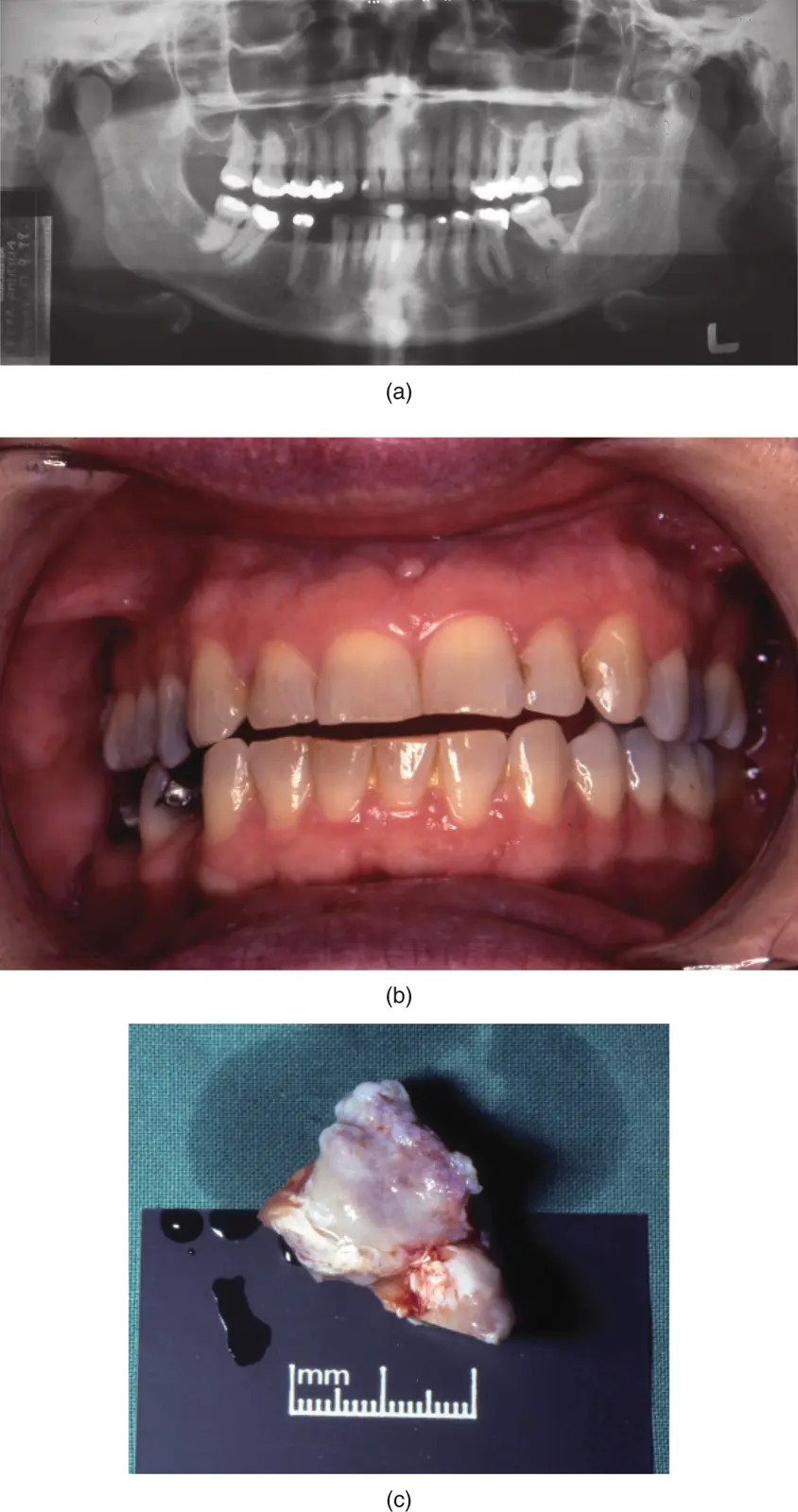
Figure 2.18(a, b) Radiological (mass anterior to left condyle) and occlusal changes (anterior open bite and midline deviation to the right) in a patient with osteochondroma in the left temporomandibular joint. (c) The tumour surgically removed.
(M. Ziad Al‐Ani, Robin J.M. Gray.)
Features that may suggest the possibility of a tumour in the TMJ include pain, swelling, paraesthesia, trismus, and occlusal changes. There may rarely be auditory changes secondary to eighth nerve involvement.
Use of radiographs and other imaging studies is of diagnostic importance and surgery is the treatment. The pathology depends on the diagnosis of the tumour.
Uncommon conditions affecting the TMJ include rheumatoid arthritis and psoriatic arthritis. Pathologically there is a thickened synovial membrane and joint effusion. There is cartilage destruction and cortical erosion and, in advanced stages of both diseases, severe bone destruction or proliferation may occur ( Figure 2.19); on very rare occasions fibrous or bony ankylosis can be the end‐point. If there is severe osteolysis, destruction of a condylar head can occur and an anterior open bite may result. It is not normal for a patient to present with rheumatoid or psoriatic arthritis in the TMJ as the first symptom. Usually diagnosis of the systemic disease will have preceded this late involvement.
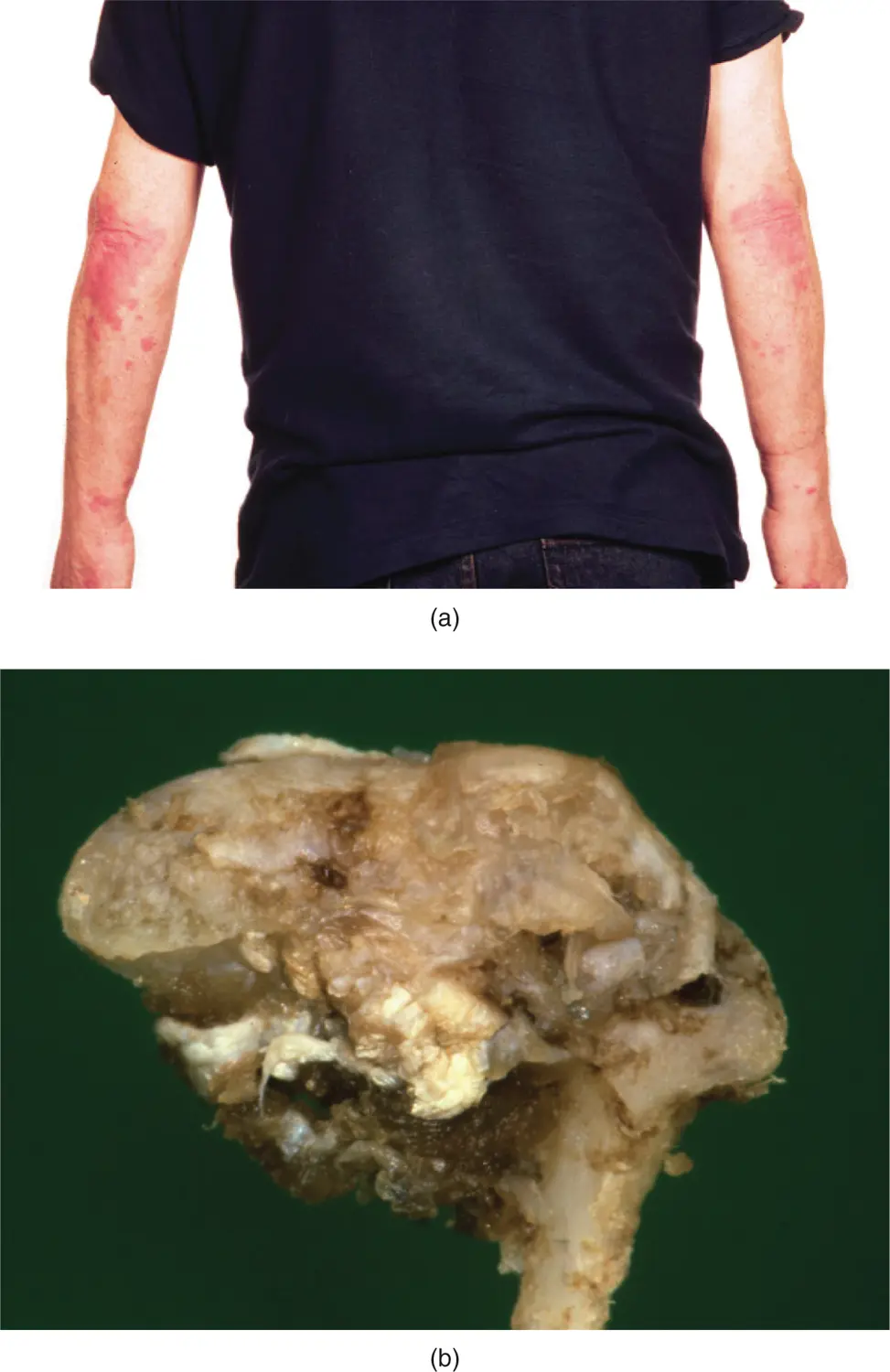
Figure 2.19(a) Psoriasis skin condition; (b) excised condyle of a patient with psoriatic arthritis.
(M. Ziad Al‐Ani, Robin J.M. Gray.)
When considering the common disorders of the TMJ, myofascial pain, (facial arthromyalgia/pain dysfunction syndrome), internal derangements, osteoarthrosis, and the response to trauma, the tissue changes are primarily inflammatory except in osteoarthrosis.
Osteoarthrosis is a term that has developed to distinguish between an acute and a chronic condition. Osteoarthrosis describes a non‐inflammatory degenerative disease. In osteoarthrosis, the disorder appears to be primarily degenerative, starting with changes within the bone and progressing through the surface tissues of the joint to subsequent involve degeneration of the articulatory surface and formation of erosion and eburnation of the surface of, usually, the mandibular condyle. These changes can also be seen, however, in the articulatory fossa (glenoid fossa). The difference therefore between osteo‐‘arthritis’ and osteo‐‘arthrosis’ is that the former is first recognised in the fluid surrounding the joint which then permeates the hard structures, whereas the latter starts in the hard structures permeating through the surfaces of the joint. From a patient's point of view, the encouraging feature is that, as the germinative mesenchyme cell layer remains throughout life, this can respond, as a result of ‘irritation’, to produce new tissue. Therefore, it is not uncommon for a patient who presents with osteoarthrosis of the TMJ to enter a phase of acute symptoms followed by a plateau stage followed by improvement of symptoms as remodelling and resurfacing of the condyle progress.
The clinical symptoms of osteoarthrosis include pain localised to the joint and limited movement which is worse with function. The clinical joint sound is crepitation, which is a grating or crunching sound from the joint that indicates a loss of the smooth articular surfaces. Crepitation can emanate from the articulating surfaces or the disc.
A further pathological change is related to disc displacement (DD) if the intra‐articular disc is anteromedially displaced. The highly innervated posterior part of the bilaminar zone, which contains elastic fibers can, with the passage of time, undergo morphological changes that render this part of the disc more fibrous. It has been reported that cartilaginous changes can also occur in this situation, which is associated with long‐standing DD when the initial symptoms would have included pain due to compression of this innervated tissue. The pain gradually diminishes as the tissue undergoes the aforementioned morphological changes of conversion from innervated elastic to less innervated fibrous tissue.
Читать дальше
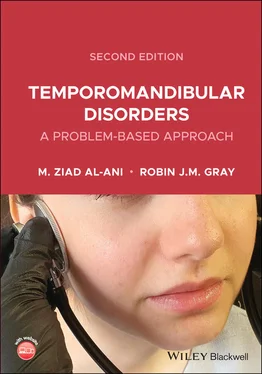



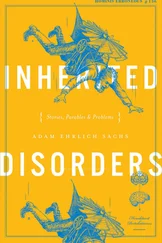


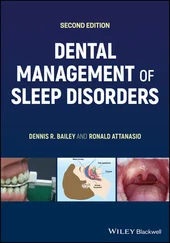




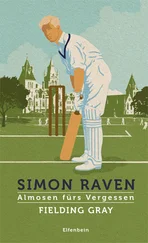


![John Bruce - The Lettsomian Lectures on Diseases and Disorders of the Heart and Arteries in Middle and Advanced Life [1900-1901]](/books/749387/john-bruce-the-lettsomian-lectures-on-diseases-and-disorders-of-the-heart-and-arteries-in-middle-and-advanced-life-1900-1901-thumb.webp)